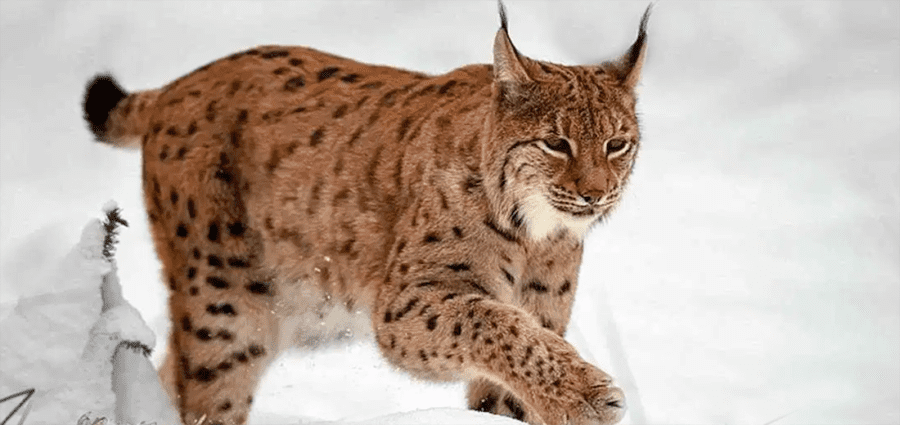
After brown bears and wolves, the Eurasian lynx is the 3rd largest carnivore in Europe. You can find these beautiful kitties from the western parts of Europe, through Russia and into eastern Asia. They prefer broadleafed boreal forests, mixed forests, the northern slopes of the Himalayas, alpine tundra, and open forests. These felines are the largest of the lynx species. This species is listed as Endangered by the IUCN, due to habitat loss, vehicle strike, hunting for their fur, invasive species, and disease.
First the Stats…
Scientific name: Lynx lynx
Weight: Up to 66 lbs.
Length: Up to 4.3 feet
Height: Up to 2.5 feet, at the shoulder
Lifespan: Up to 25 years
Now on to the Facts!
1.) These cats are crepuscular (active at dawn and dusk).
2.) Like a lot of cats, they spend their days sleeping. But they will also sleep at night too.
3.) Just like most cats, they are solitary, sans during the breeding season.
4.) They are skilled climbers that will sometimes lay in wait, in a tree, to ambush passing prey. Death from above!
5.) Eurasian lynxes can patrol an area as large as 249 square miles!
But wait, there’s more on the Eurasian lynx !
6.) Their vocalizations consist of growls, coughs, grunts, hisses, purrs, meow-like caterwauling, mews, growls, and chattering (when prey is out of reach; like a house cat will do).
7.) A group of lynxes are called a clutter, destruction, clowder, or pounce.
Did you know…?
These trekking felines can travel up to 12 miles in 1 night, looking for food.
8.) They prey on roe deer, musk deer, chamois, red foxes, rabbits, hares, mice, rats, birds, markhor, as well as elk, and caribou.
9.) Eurasian lynxes are polygynous (1 male mates with several females).
10.) Females birth 2 – 3 kittens, after a 2 month gestation (pregnancy).
But wait, there’s still more on the Eurasian lynx !
11.) During the winter, their paws will grow long, thick fur that acts as a snowshoe.
Did you know…?
The Eurasian lynx can jump up to 25 feet, horizontally and 6 feet vertically!
12.) They don’t tend to chase prey down, preferring instead to ambush their prey.
13.) The national animal of Macedonia and Romania is the Eurasian lynx.
14.) The lynx has very good eyesight. This gives way to their name. It is believed that it hails from Greek mythology and that of Lynceus, who was said to be able to see through the earth.
Now a Short Eurasian Lynx Video!
Be sure to share & comment below! Also, check out the Critter Science YouTube channel. Videos added frequently!
Want to suggest a critter for me to write about? Let me know here.



